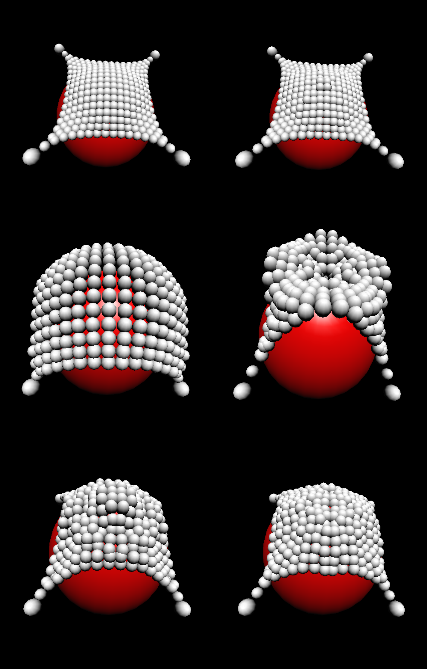As we continue physical modeling month, here’s a free piece of software that lets you create music and sound (and visuals) using real-world physics:
Johan Strandell writes:
It’s not physical modeling in the usual sense; pmpd simulates things like friction, acceleration/deacceleration etc.; i.e., more useful for control of parameters rather than synthesis in itself. Some of the examples are really intriguing, but I’ve only scratched the surface on it. An article about it would be great, to see what other people are doing with it.
Consider your challenge accepted. May take me a while, but I’m doing some other work modeling physics, so this could segue nicely. As you can see in the visual below, you can use this to model fluids, matter, particles, and other substances. That could be easily applied to sound synthesis (and they include a number examples) as a way of making control less mechanical and more dynamic and organic. Since environments like GEM run 3D visuals on your graphics card, there’s nothing stopping you from dedicating your graphics card GPU to visual feedback while the CPU plugs away on the sound.

To run this, you’ll need the free Pure Data (Pd) environment for visually programming sound and multimedia. There is a Max/MSP port for OS X, and since he’s included source code I’ll try to compile for Windows, but since Pd is free and the examples and illustrations are in Pd, you’re better off starting there and worrying about porting to Max later.
There’s also a library for SuperCollider; I know there are some SuperCollider-using readers out there so let us know how this works out for you. Visual below.

Yeah, I know, it’s summer vacation — so, music technology faculty, I fully expect you to give us some examples, since you’re out in your summer cabin with no students to bother you. (I had a teacher once who said the one that would make teaching a perfect profession is if there were no students.)